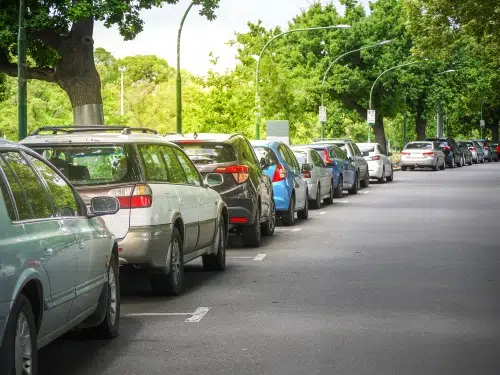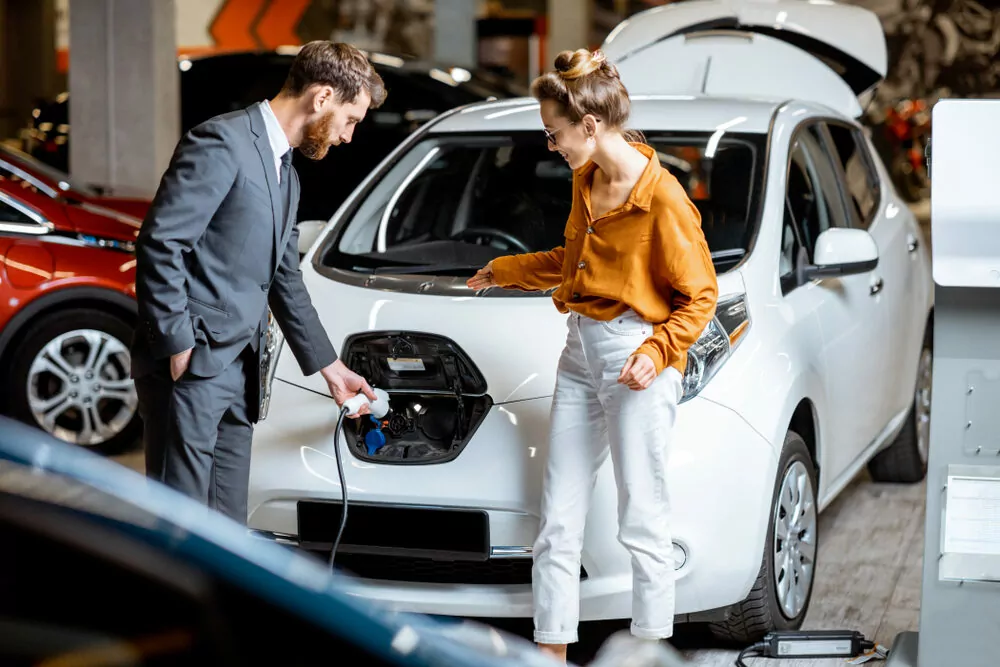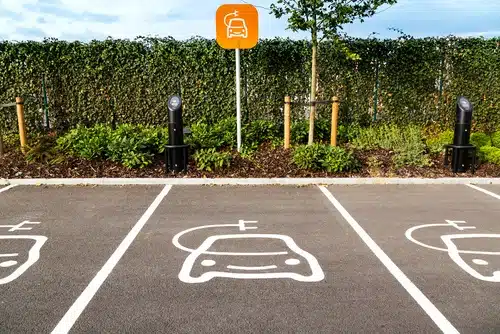Home » Blog » Car » Cars: Understanding Them » How to Choose the Best Electric Car For You
Categories
Tags
animal welfare
breed profile
buying a car
buying a pet
Car
car accessories
car care
car features
car insurance
Car safety
car sales
car service
cat
cat behaviour
cat body language
Cat Breeds
cat food
cat insurance
comprehensive car insurance
Dog
Dog Behaviour
dog body language
Dog Breeds
dog food
Dog Insurance
dog training
eco friendly cars
Kitten
New Car
pet accessories
pet activities
Pet Adoption
pet breeders
pet days of the year
pet fun stuff
Pet Health
pet insurance
pet parenting
Pet Safety
pet services
Puppy
rescue pets
road safety
road trip
safe driving
Recent Blog:
Facebook Posts
1 day ago
Growing old sometimes means we can’t take care of pets anymore. Find out some advice on what to do when this happens:![]()
![]() Senior Pet Parents – Contingency Plans for Your Pet – bit.ly/44bzwkS
... See MoreSee Less
Senior Pet Parents – Contingency Plans for Your Pet – bit.ly/44bzwkS
... See MoreSee Less
Senior Pet Parents' Contingency Plans for Pets
www.pd.com.au
Sometimes senior pet parents need more downtime. For older pet owners, this can be tricky to navigate if their dog or cat is full of beans and wants to3 days ago
Before you rev up the engine, let’s run through a checklist of things to do before starting your car. Not only do these steps ensure your safety (and that of others around you), but they also help in maintaining your vehicle's longevity.![]()
![]() Driving Tips: Your Checklist Before Starting Your Car -
... See MoreSee Less
Driving Tips: Your Checklist Before Starting Your Car -
... See MoreSee Less
Driving Tips: Your Checklist Before Starting Your Car
www.pd.com.au
Heading out for a drive? Hold up a second! Whether you're dashing off to work, running errands, or embarking on a road trip adventure, there are a few1 week ago
Are intestinal worms setting up camp in your dog’s gut without paying rent? Here’s how to spot the main culprits and get rid of them too:![]()
![]() Preventing, Identifying and Treating Intestinal Worms in Dogs - bit.ly/43YjCKu
... See MoreSee Less
Preventing, Identifying and Treating Intestinal Worms in Dogs - bit.ly/43YjCKu
... See MoreSee Less
Preventing, Identifying and Treating Intestinal Worms in Dogs
www.pd.com.au
Intestinal worms, such as roundworms in dogs are one of the least glamorous topics on the planet. These intestinal parasites that basically use our dogsIf you’ve ever felt guilty about your car’s emissions and the impact it’s having on our environment, then buying the best electric car may have crossed your mind. We know it’s crossed ours! Or you might have just been wondering whether it’s even worth venturing into the world of green cars.
Aside from the obvious environmental benefits, did you know electric vehicles have many time and money saving perks too? Sounds like a dream come true, right?
If you think you’re ready to take the plunge, it’s worth doing a bit of research because there are lots of things to consider when switching from fossil fuel-powered cars to electric ones.
Luckily, we’ve done the hard work for you. Read on for our pro’s guide on how to choose the best electric car for you.
The best electric car: benefits of buying one
The initial upfront costs of buying an electric car are often higher when compared to their fossil fuel counterpart. However, their ongoing fuel and maintenance costs are significantly lower. And with thoughts around how to save on fuel on everyone’s minds at the moment thanks to skyrocketing petrol prices, electric-car drivers are laughing all the way to the bank.
Cost savings
The latest report from the Electric Vehicle Council (EVC) has found the cost of running your car on fossil fuel is approximately $1.50 per litre, compared with $0.33 per ‘elitre’ for electric cars. And to make things fair, they even compared the costs during periods of high electricity prices and low petrol prices.
The result: a potential saving of around $6,500 over 5 years. Wow. Plus, depending when you buy, you might be eligible for electric car rebates.
To add to those savings, an electric car doesn’t require the same level of servicing as a car with a combustion engine. There’s no need to replace filters and spark plugs, change oil or maintain the different moving parts in the petrol or diesel engine. So if you prefer low maintenance, you’re winning.
Of course, estimates will vary according to your car use. But the time and money savings from reduced servicing is enough to make us want to learn more. Why not get a more accurate cost comparison with this Electric Vehicle Comparison Calculator?
Environmental benefits
And don’t forget the eco benefits. The EVC data also tells us that Australia could eliminate 6% of our total greenhouse gas emissions if we all switched to 100% electric cars. Impressive.
If you’re considering hybrid instead of full-on electric, we’ve got everything you need to know about whether hybrid cars are green enough and what their impact on the environment is.

What you should know before switching to an electric car
Your individual driving habits and transport needs are going to be the biggest factors in helping you decide which electric car is best for you, if that’s the path you decide on.
First, read this article about the four different types of electric vehicles available on today’s market. They’re not all built exactly the same, and don’t come with all the same benefits. Once you’ve decided if you’re more a PHEV or a BEV person, you’ll have a good starting point.
Then, read on below.
Best electric car range comparison
The maximum distance you can travel in an electric car on a single charge varies between models, from 150km for a Mistubishi i-MiEV all the way up to 660km for the Tesla Model S (Long Range).
If your driving habits match that of the average Australian (at around 38kms a day), you’ll probably have nothing to fear from a battery that can only take you 150km before needing to recharge. Sometimes though, you need to go further. Or you need a car with different capabilities. After all, what happens when you want to go on a caravan holiday or a loooong rural road trip? You know, the kind where electric charging stations aren’t exactly a dime a dozen.
If you have access to a second family car, this might be a better option – at least until the infrastructure catches up and electric charging stations are as common as petrol stations.
That said, everything in your car uses power, so it makes sense that the way you drive also has an impact on your car’s range. You can manage the amount of power you use and potentially keep it to a minimum, if you:
- accelerate smoothly and avoid hard braking
- stick to easier to navigate routes (with even terrain and less hills)
- keep your tyres at the correct pressure (and reduce the energy needed to propel your car forward)
- are conservative with air con and heating, and
- travel light when possible (to reduce the load on the engine).
And here are some more ways to eco-boost your car.

Battery and charging time
Battery technology is advancing all the time, meaning the power, range and affordability of electric cars will continue to increase.
Consider the battery size
Most modest-sized sized electric vehicles have batteries that range from 16 to 24 kWh. Bigger models, like the Tesla Model S, are fitted with a 60 or 85 kWh battery. The bigger batteries might be more effective and give you a longer range, but they are also much more expensive.
What is the expected charging time?
How long do you usually spend at a service station filling your car with fuel? Ten minutes? Compared to their fossil fueled cousins, your electric car’s charging time can be anywhere from half an hour at a fast charge station, 4 hours with a specialist charging socket (if your car needs one) and up to 8-20 hours from your home power socket.
So on a long trip, you’re looking at a lunch break or an overnight stay to recharge, not a quick stop for a couple of minutes. Planning is key to avoiding range anxiety and adding hours to your trip. This electric car charging map will help you plan ahead.
Check the battery’s warranty
The good news is, most manufacturer warranties cover the battery for around 8+ years, meaning the average car owner will probably never have to replace it in the time they own it.
Which is great if you buy new, but cold comfort if you’re a second-hand electric car buyer.
However, battery prices dropped 80% between 2010 and 2016, so if the previous trends continue (and they are expected to) this won’t be such a problem. Especially considering the other running cost savings of owning an electric car.
Research says a 40kW battery today would cost around $8,000 USD to replace (ouch!), but in 2030, the same battery is expected to cost $2,800 USD. So you’ll just have to hold on for a few more years to make those savings!
Of course, an older car might cost more in maintenance, but over its lifetime the running cost savings make the cost of replacing a battery a much easier pill to swallow.

Electricity costs and limitations
It’s true that the cost per year of charging your electric vehicle at home will still be cheaper than filling your car with fossil fuels. It will increase your electricity usage, so make sure you’re on the best energy plan for what you decide is the best electric car for you.
Canstar helps you compare electricity deals. Don’t be afraid to ask the utility provider for a discount – you’d be surprised how often these companies cough up to sign you on.
It’s also worth checking with an electrician if your home’s electrical support is adequate to support the charging load. Those built in or before the 1970’s might need an electricity supply upgrade before you can charge your car at home.
Limited towing capacity
One major downside of almost all electric vehicles is their unsuitability as towing cars (think boats, trailers and caravans). There are a number of reasons for this, but if towing is an important part of your regular driving then you can expect to pay a premium price for the privilege. And you probably still won’t beat a good old Hilux.
Before you take the plunge on your best electric car choice, ask the manufacturer what the maximum load rating is on their electric or hybrid models.
Comparing prices for the best electric car
A quick comparison of many of electric models shows prices are between $20,000 to $100,000 more expensive than your average petrol car. The cheapest model (at the time of writing, in April 2022) is the MG ZS EV starting at around $44,900. Then there’s the Nissan Leaf and Hyundai IONIC, both of which are around the $55 000 range, and the Hyundai KONA at around $60 000 – but which is a proper SUV.
There’s not much in the way of middle ground, so after those “budget” selections, you’re looking at a big jump up to Jaguars, Teslas, and BMWs, which could set you back anywhere from $100 000 to $150 000 or more, depending on what you want from your electric car.
If these prices are still too high for you, a hybrid might be your next best option. The difference is usually only marginal (think $1,500 extra than their petrol-powered versions). These cars provide you with some of the extra range and environmental benefits without the massive outlay.
It’s worth doing the sums to see how fast you could recoup the extra outlay and whether you think the long-term savings and eco benefits outweigh the higher price.

The best electric car for safety
Another aspect in choosing your vehicle you’ll want to consider is how safe the car is. Luckily, some of the most popular electric car brands have very high safety scores. In fact, some electric cars are safer than internal combustion-engine vehicles.
The Australasian New Car Assessment Program (ANCAP) is our region’s independent voice on vehicle safety. Using a star rating system of 0 to five, ANCAP tests vehicles across four key areas:
- Adult Occupant Protection
- Child Occupant Protection
- Vulnerable Road User Protection
- Safety Assist (how well the car’s technologies help a driver prevent or minimise a crash)
In September 2022, ANCAP tested the Tesla Model Y, Kia Niro and Genesis GV60 and awarded all three cars perfect scores. The Model Y achieved the highest ANCAP score ever when it came to Safety Assist, earning a near-perfect 98%. It also scored the highest Adult Occupant Protection score to date against 2020-2022 rating criteria (97%).
To find out how cars are tested and what to look for, read about the safest electric cars.
What electric car is best for you?
We hope you feel more confident comparing models after reading through our guide to buying the best electric car. We want you to be able to make the best decision for your circumstances.
As well as the savings benefits of going green, did you know there are also financial perks of being the sole owner-driver of your car? Why not explore them with PD Insurance and get a quick quote today?
Share On:




